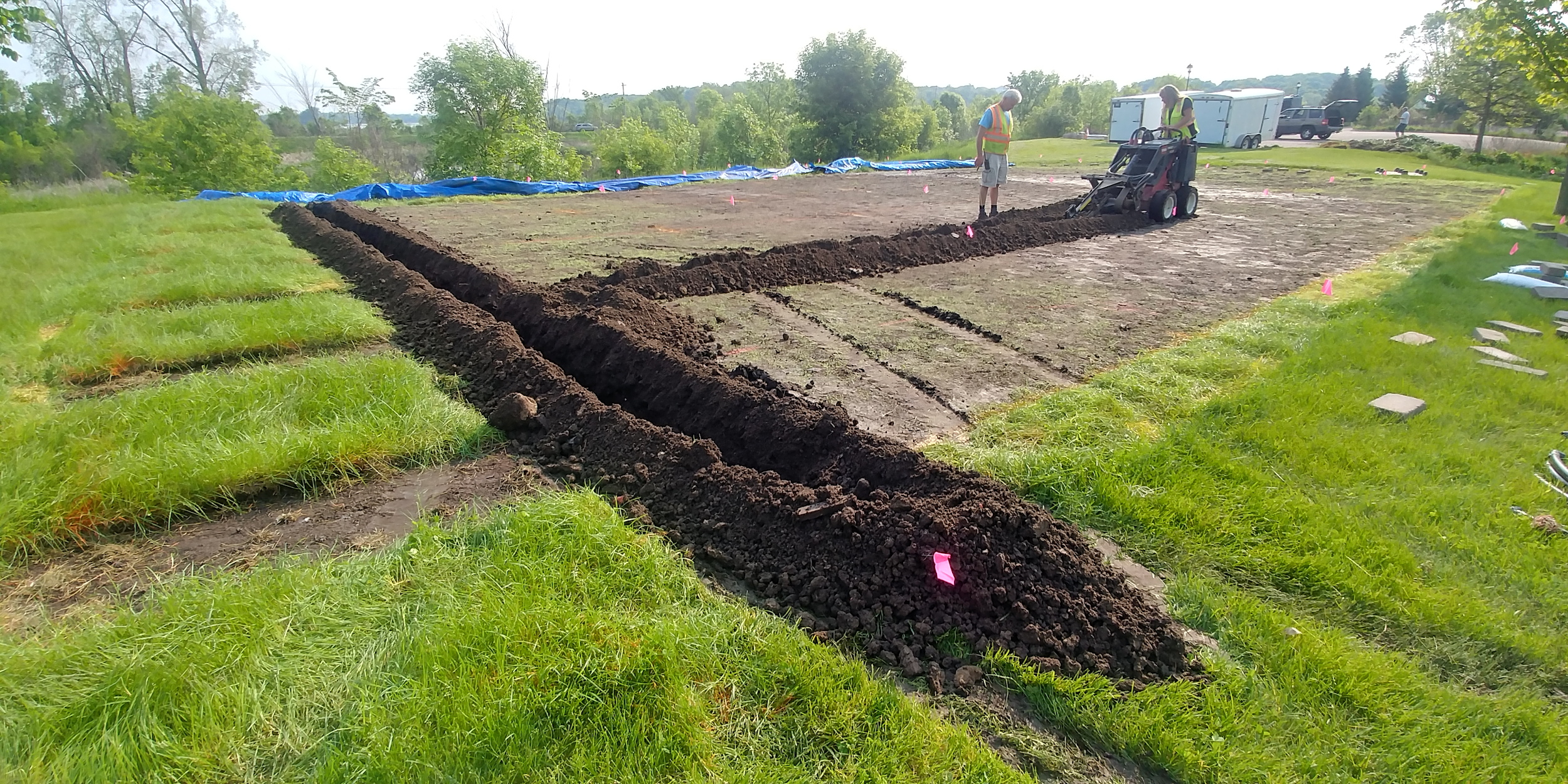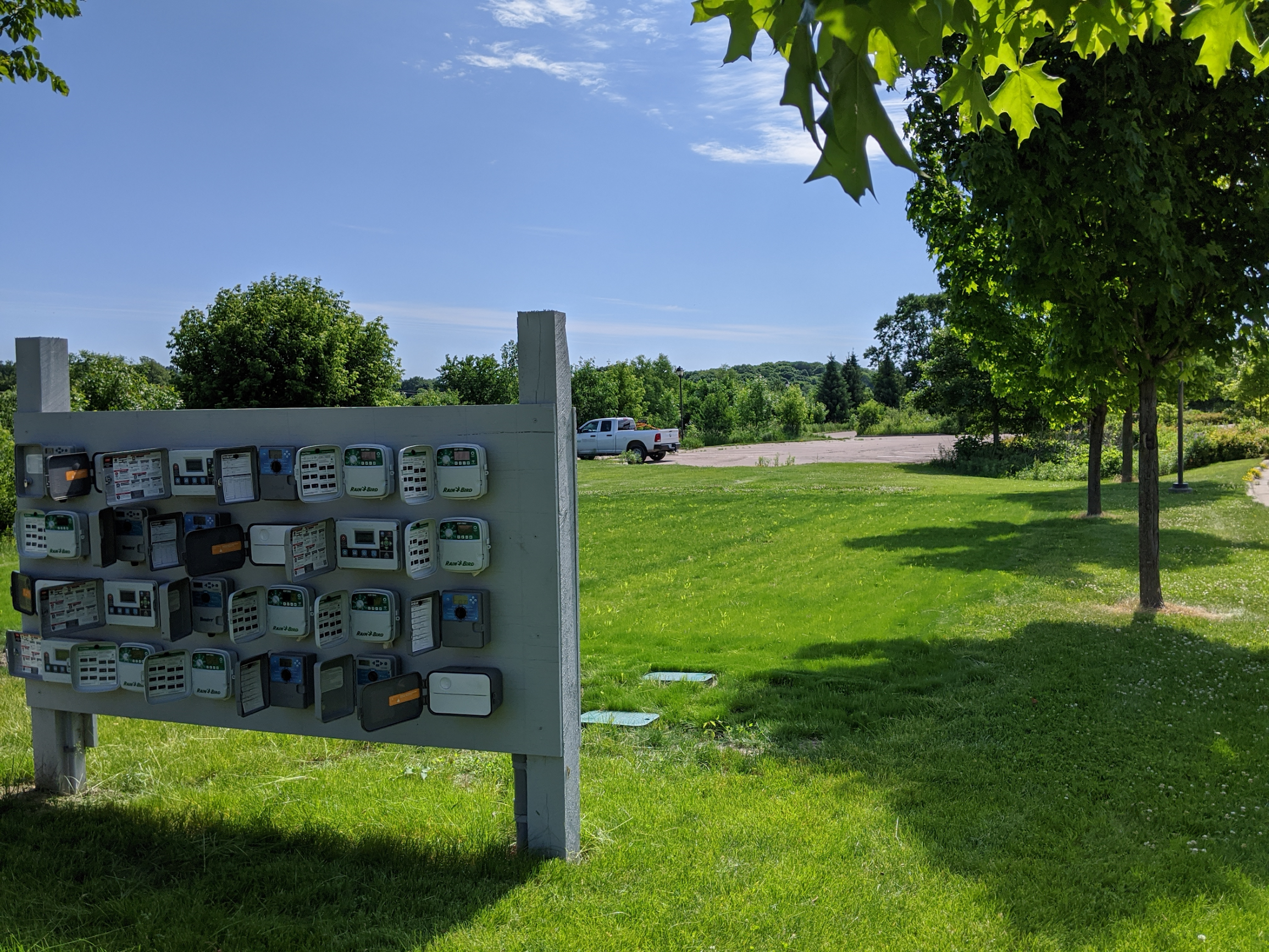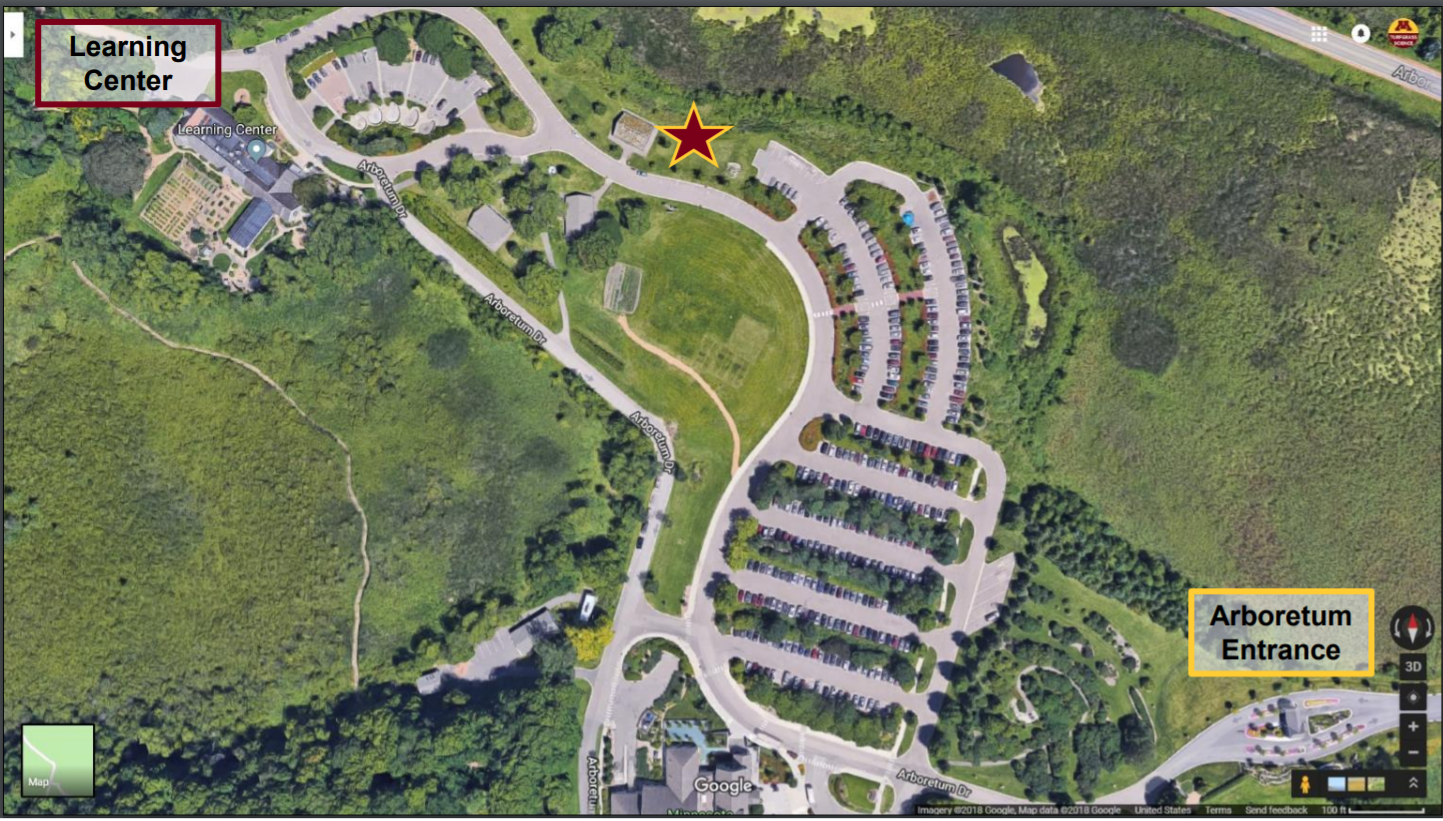By Shane Evans
The University of Minnesota Landscape Arboretum is home to several model landscapes, gardens and research projects. With funding from the Metropolitan Council and the Minnesota Clean Water, Land and Legacy Amendment, Turfgrass Science team members, led by Dr. Dan Sandor, now at Virginia Tech University, installed an experiment to determine the effectiveness of various smart irrigation controllers and technologies in 2019. The purpose of this article is to give a brief introduction of the project and what we hope to learn from it.
For this experiment, a total of six treatments will be tested using a variety of irrigation controllers. The research site contains 24 plots of a fine fescue mix, meaning the six treatments will be replicated four times. The treatments we will look at are as follows:
- An irrigation controller connected to a rain sensor, which can cancel irrigation events
- Irrigation by natural precipitation (rain) only
- An irrigation controller scheduled to water every other day
- A Wi-Fi enabled smart irrigation controller which uses local weather data to alter the irrigation schedule (in duplicate)
- An irrigation controller connected to a soil moisture sensor, which can cancel irrigation events
Another point we hope to address in this study are the potential difficulties the average homeowner may face when installing and setting up smart irrigation controllers and sensors. Whether you are digging a hole to place your soil moisture sensor, connecting wires or installing a rain sensor, issues always seem to arise. Though manuals are often provided, mistakes are more common than one would expect. To determine how “costly” these mistakes are, we will calculate water application using proper installation and programming techniques for each controller/treatment. We will then alter various aspects of the controllers and/or sensors to mimic common homeowner mistakes. This will allow us to determine the amount of water that could potentially be “wasted” if a sensor is installed wrong or the controller is programmed incorrectly.
Shane Evans is leading a webinar series on lawn irrigation this summer. Be sure to visit our webinar event page for more information!


